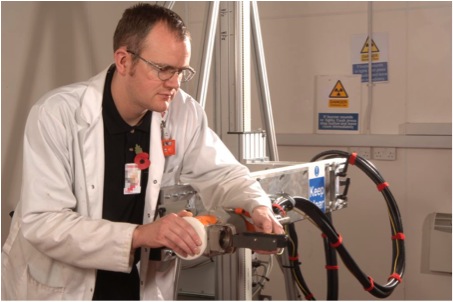pdf Deterministic injuries to radiographers hands (240 kB)
Description of the incident
An industrial radiographer placed his fingers over the window of an X-ray tube operating at 160 kV, not realising that it was generating X-rays. His fingers were exposed to the primary beam for about 7–10 seconds before a colleague noticed that the X-ray set was switched on and they were able to isolate it from the power supply.
Several days later the radiographer suffered blistering to the skin of his fingers. The incident happened because the radiographer, who was an appointed Radiation Protection Supervisor, did not follow local rules including the need to isolate the X-ray set after each exposure and to use a radiation dose rate monitor on entering the controlled area. However, important contributing factors were:
- the pre-exposure warning signal was practically inaudible because it had been taped over to reduce the noise level
- the visual exposure warning signal has failed at some time.
Both of these suggest that adequate checks were not being carried out on the functioning of these warning devices, and the procedure whereby radiographers were expected to report defects was not followed. The company carried out yearly maintenance of the equipment but apparently performed no other checks. A senior RPS did visit site occasionally, but appears not to have monitored working practices.

Radiological consequences
It was estimated by tissue biopsy that the radiographer received approximately 60 Sv to the hands.
Lessons learned
Installed radiography safety systems should, where practicable, be designed to be fail-to-safety. For example, if the exposure warning light fails, it should not be possible to start an exposure.
Periodic checks of all safety and warning devices are necessary to ensure that these continue to operate correctly. This applies even where systems are considered to be fail-to-safety (eg as shown with the taped-over audible pre-warning). Also, management must have suitable means for monitoring working procedures to make sure these remain consistent with local rules.
Even where there are installed safety systems, there is a need for monitoring. The wearing of a personal radiation alarm monitor and/or the use of a portable radiation monitor could have prevented this incident (or at least reduced the doses received).
Regular communications from management, together with appropriate refresher training, should be used to help radiographers understand the potential radiation hazard and the importance of complying with the local rules.



